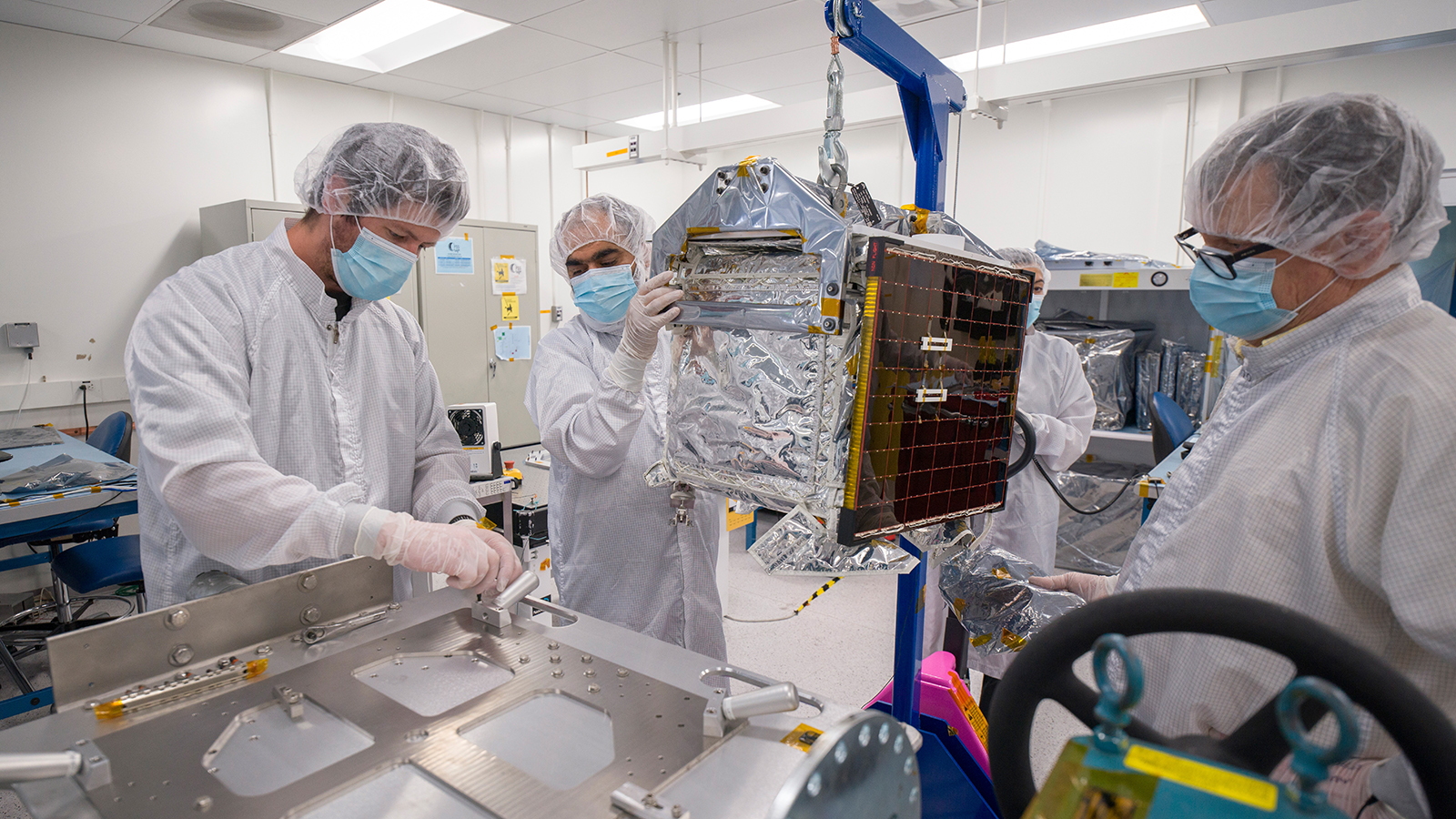Stay Up to Date
Submit your email address to receive the latest industry and Aerospace America news.
Some 4.5 billion years ago, a Mars-sized chunk of primordial matter collided with the young Earth, blasting off a molten mixture of debris that coalesced to form our moon. The giant-impact theory is now widely accepted as the best explanation for the origin of our moon, but there remains no consensus over its ensuing evolution. Scientists generally agree that it has at least a partially molten core, but they don’t know the core’s size, whether the core’s center is solid or if it’s perhaps surrounded by molten rock. If scientists knew more about the core and its temperature, they could determine how much of the moon consists of material from Earth versus that primordial matter. The core’s temperature and materials could also suggest more definitively whether there was once a magnetic field.
“These are the big questions we’re aiming at,” says Mark Panning, a planetary seismologist at the NASA-funded Jet Propulsion Laboratory in California. “You really need to model everything that’s happening all the way down to the core to understand how that body formed and evolved.”
Panning is principal investigator for two seismometers packed inside a cube about the size of an air conditioning unit that will attempt to address those questions in 2026. One is the Very Broadband seismometer. If the name gives you déjà vu, that’s because it’s just like the one supplied by CNES, the French space agency, for NASA’s Mars Insight lander, for which Panning was a co-investigator when it touched down on the red planet in 2018. It consists of a titanium cylinder resembling a small cooking pot, but one that’s fused shut by laser to safely house its sensor, which resembles an optical microscope frame. This frame is held in place by a flat rectangle of polymer that’s bent to serve as a spring so that the frame will rock when the lunar surface beneath moves.
Moonquakes are subtle affairs, and the sensor’s motion would be imperceptible to you or me, amounting to a distance of 1/20th the thickness of a piece of paper to detect up-and-down motions smaller than the length of a hydrogen atom.
The other seismometer is the Short Period instrument, and it’s just like one provided for Insight by the Imperial College, London and the University of Oxford. Slightly larger than a hockey puck, it’s named for the frequency of wavelengths it detects. Inside are three flat, 2.5-centimeter square wafers of silicon to measure up-and-down and side-to-side motions, so scientists can calculate the direction seismic waves are traveling. Each wafer consists of a flat square piece of material within the larger square — held in place by three silicon strips that act as springs.
This Farside Seismic Suite is slated to undergo final preparations in November or December when its control software is tested. It’s one of the payloads scheduled to be landed on the lunar surface in 2026 aboard a commercial lander under NASA’s Commercial Lunar Payload Services initiative. The seismometers will make their measurements while attached to the stationary lander.
These won’t be the first seismometers on the moon. Apollo astronauts set up paint-can-sized seismometers and antennas that for year’s transmitted readings to scientists. These detected subtle moonquakes, likely caused by Earth’s gravity tugging on the moon from different angles and deforming it as it wobbled in its orbit. The Apollo data backed the giant-impact theory and all but ruled out other ideas. Panning has analyzed this data, but he was 3 months old when the Apollo seismometers were turned off in 1977. “So, I’ve literally been waiting my entire life to get more seismic data, even though I didn’t know it at the time,” he says.
About Keith Button
Keith has written for C4ISR Journal and Hedge Fund Alert, where he broke news of the 2007 Bear Stearns hedge fund blowup that kicked off the global credit crisis. He is based in New York.
Related Posts
Stay Up to Date
Submit your email address to receive the latest industry and Aerospace America news.




